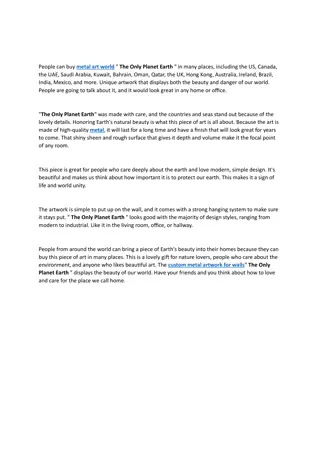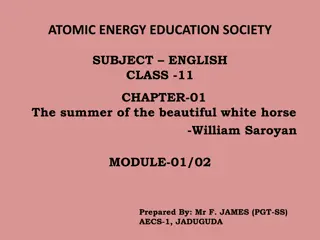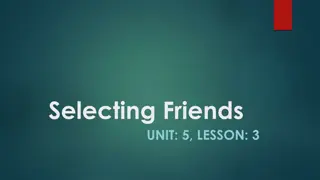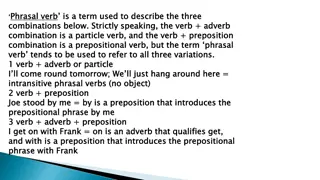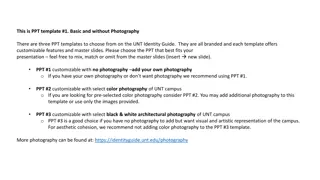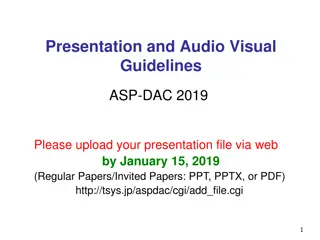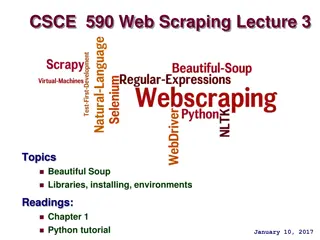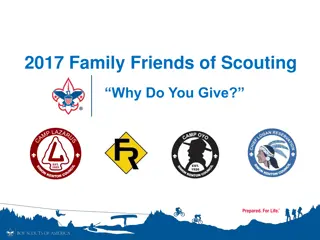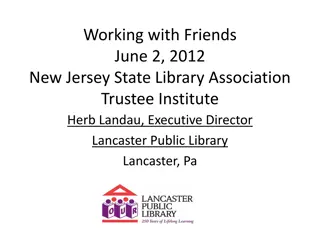Our Beautiful Stinky Friends
Delve into the fascinating world of fermentation with chef/scientist David Zilber in this insightful listening guide based on the Science Friday podcast. Explore the science, ingredients, and techniques behind fermentation as Zilber shares his expertise and tips for home fermenters. Enhance your knowledge of how fermentation works, what ingredients are essential, and how to prevent unwanted microbes in your ferments.
Download Presentation

Please find below an Image/Link to download the presentation.
The content on the website is provided AS IS for your information and personal use only. It may not be sold, licensed, or shared on other websites without obtaining consent from the author.If you encounter any issues during the download, it is possible that the publisher has removed the file from their server.
You are allowed to download the files provided on this website for personal or commercial use, subject to the condition that they are used lawfully. All files are the property of their respective owners.
The content on the website is provided AS IS for your information and personal use only. It may not be sold, licensed, or shared on other websites without obtaining consent from the author.
E N D
Presentation Transcript
Our Beautiful Stinky Friends Listening Guide
How To Use This Document This annotated guide will help you focus on key pieces of information from a podcast about fermentation. The body of the side lists questions to be answered with information from the piece. You will listen to an episode of Science Friday called World-Class Tips For The Home Fermenter After completing this document, you will be able to: Describe the basic science behind fermentation Describe what ingredients are required for fermentation Know how to avoid unwanted microbes in your fermentation reaction This Science Friday piece features an interview between host Ira Flatow and chef/scientist David Zilber. David Zilber ran the fermentation lab at a prestigious restaurant in Denmark called Noma. In this interview, Zilber discusses how he ferments foods and explains some of the science behind it.
Using The Timestamps The title of each slide includes a Time Remaining timestamp and a quote to listen for. Start by clicking on the orange play button in the center of the story header. Once you do, you ll see the timestamp at the top of the window as and orange and black bar, with a yellow border below. Click on the black bar to select a timestamp and move the recording forward. Use the play button on the left to play the recording. Timestamp Play Button
-22.34 Who gets into the club? 1. What is the chemical difference between fermentation and rot? Your description may include an analogy. 2. What are the different ingredients and control points that regulate fermentation? 3. How did bacteria aid the transformation of cabbage into sauerkraut? 4. How does salt aid the bacteria in changing cabbage into sauerkraut? 5. How does fermentation make it harder for bad bacteria to grow?
-19.21 What is the difference 1. 2. 3. What is the difference between pickling and fermenting? What are two types of fermentation that occurs during the pickling process? What is the effect of pH on fermentation?
-16.33 You can absolutely build 1. 2. 3. Where in the house can you let something ferment? What is the importance of location in the fermentation process? What is the textbook definition of fermentation?
-12.12 For the novice 1. What recommendations does Zilber give for starting off in home fermenting?
-8.44 What exactly is kombucha? 1. 2. 3. 4. What microbial reactions give kombucha its taste? What are the two kinds of microbes that make kombucha? What are the two microbial reactions important to kombucha? Is it possible to overcook a fermentation?
-4.45 What goes into a successful ferment 1. 2. 3. What goes into making a successful ferment? How does every little variable affect the success of the ferment? What did the Zilber say to do if there were problems with mold?











